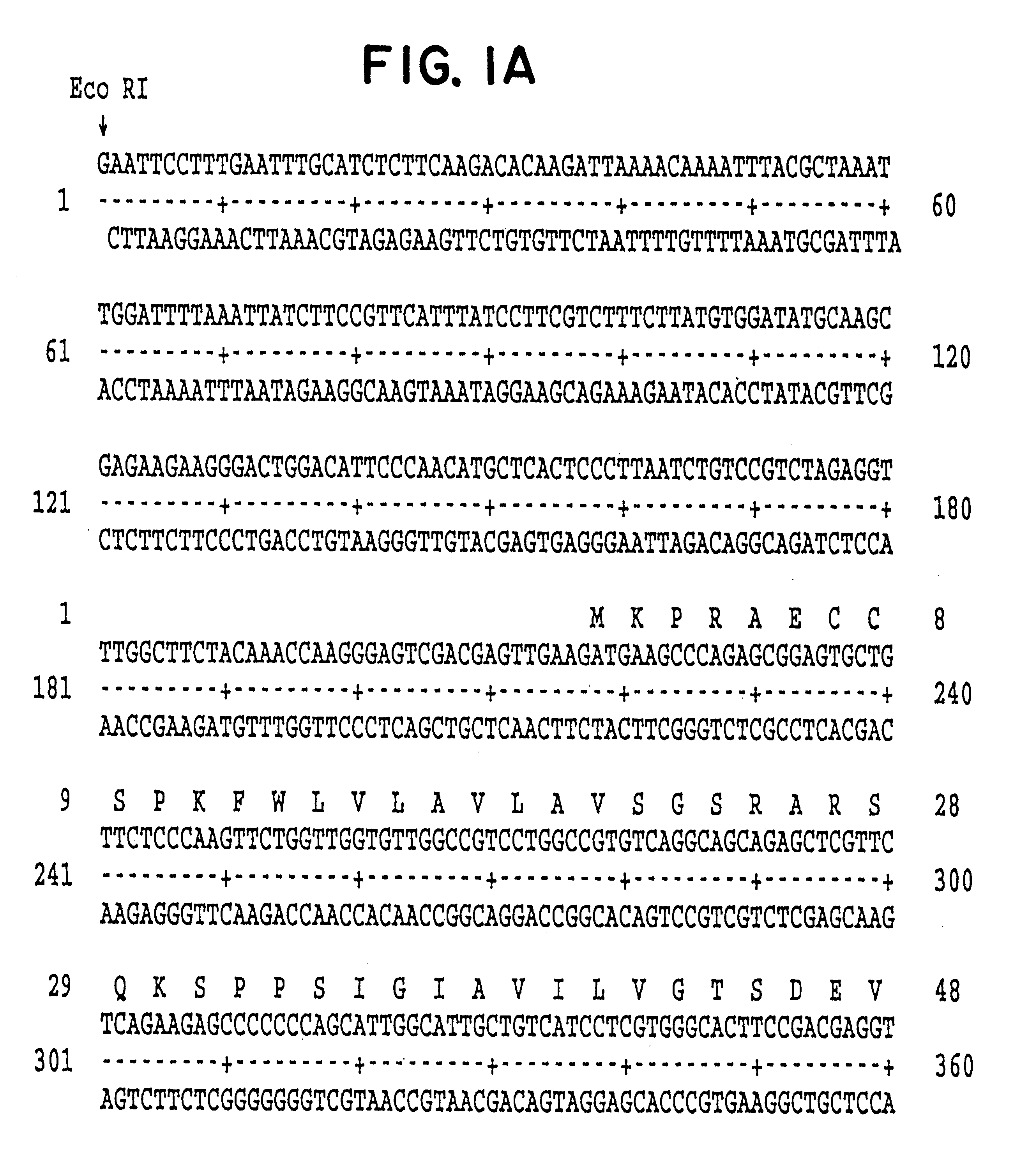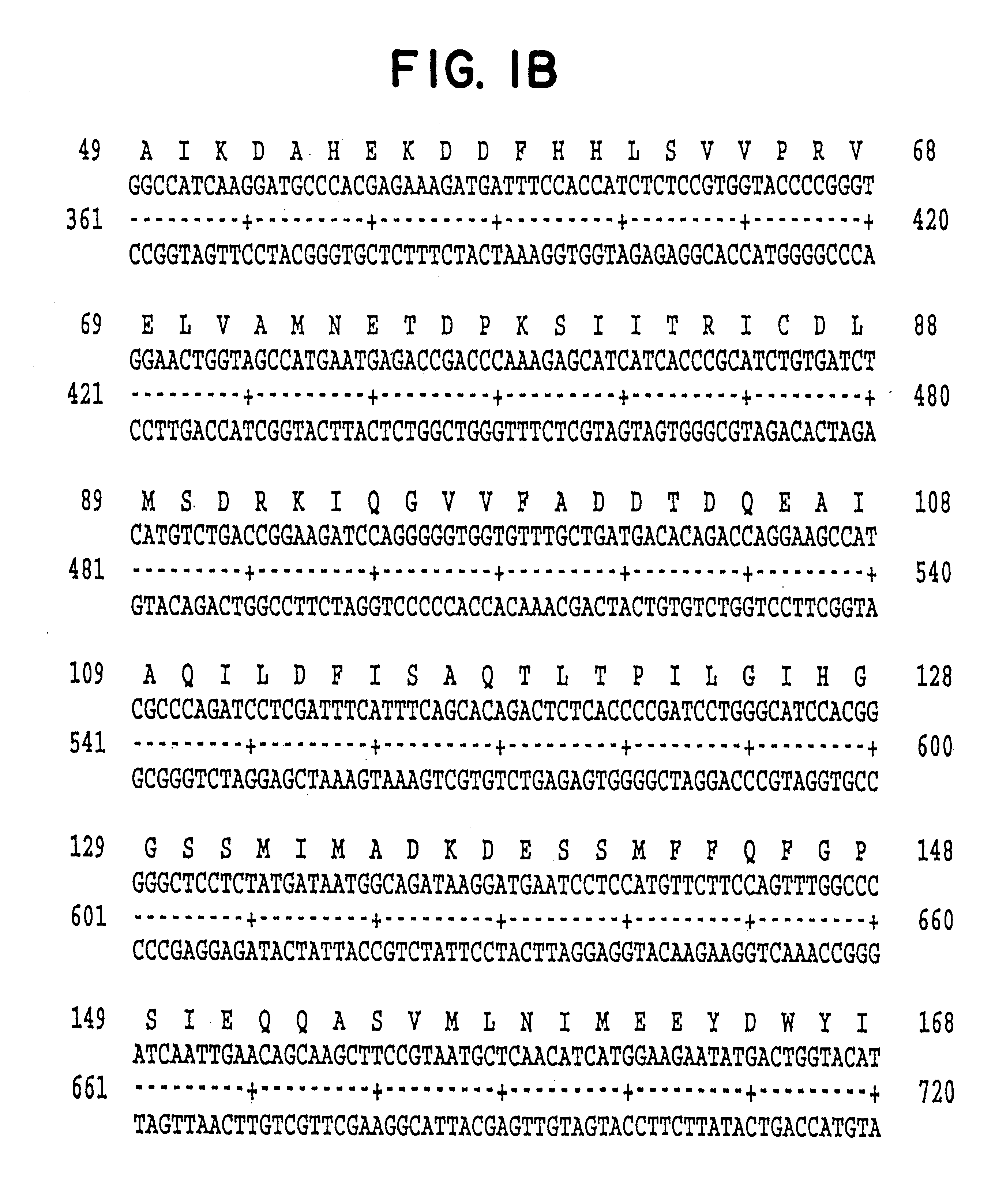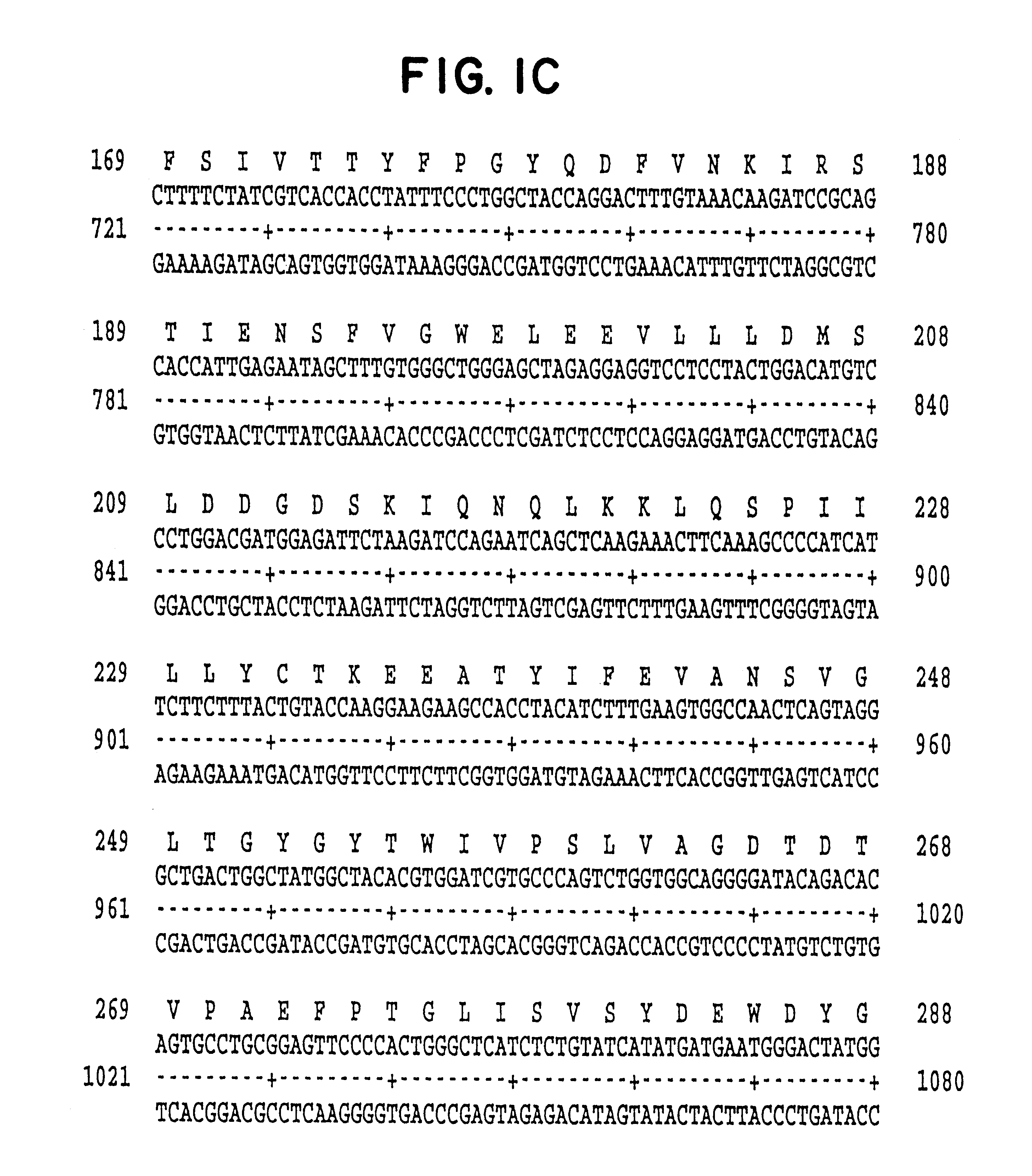Ionotropic human glutamate receptor subunit NR3
- Summary
- Abstract
- Description
- Claims
- Application Information
AI Technical Summary
Problems solved by technology
Method used
Image
Examples
example 1
Isolation of DNA Coding for Human NR3-1
A human NR2A DNA probe corresponding to a portion of nucleotide sequence of NR2A-1, namely the nucleotide regions 1832-2361 (SEQ ID NO:9) as shown in FIG. 5, was generated by PCR-based amplification of recombinant bacteriophage lambda DNA isolated from an Eco RI-based bacteriophage lambda library of human hippocampus cDNA (obtained from Stratagene Cloning Systems, La Jolla, Calif.). The following degenerate oligonucleotide primers were used in the PCR amplification:
1) 5' GGGGTTTAGATCTGGGT-A / C / G / T-ATGATGTT-C / T-GT-A / C / G / T-ATG 3' (SEQ ID NO:20); and
2) 5' GGGGIIIAGATCTGC-A / C / G / T-GC-A / G-TC-A / G-TA-A / G / T-AT-A / G-AA-A / G / CIT-GC 3' (SEQ ID NO:21)
The primers were used at a final concentration of 2 pmol / .mu.l each, in a 50 .mu.l reaction volume (10 mM Tris-HCl, pH 9.0; 50 mM KCl; 1.5 mM MgCl.sub.2) containing 100 ng of recombinant human hippocampus cDNA / bacteriophage lambda DNA, 5 units of Thermus aauaticus DNA polymerase (Promega, Madison, Wis.) and 0.2 mM...
example 2
Isolation of DNA Coding for the Human NMDAR1-1 Receptor
A human NMDAR1 probe corresponding to a portion of nucleotide sequence of NMDAR1-1, namely the nucleotide regions 2605-3213 as shown in FIG. 6, was generated by PCR-based amplification of recombinant bacteriophage lambda DNA isolated from an Eco RI-based bacteriophage lambda library of human hippocampus cDNA (obtained from Stratagene Cloning Systems, La Jolla, Calif.). The following degenerate oligonucleotide primers were used in the PCR amplification:
1) 5' GGGGTTTGGATCCAA-A / G-GA-A / G-TGGAA-C / T-GGNATGATG 3' (SEQ ID NO:22); and
2) 5' GGGGTTTAAGCTT-C / T-TC-G / A-TA-G / A-TT-G / A-TG-C / T-TT-C / T-TCCAT 3' (SEQ ID NO:23)
The primers were used at a final concentration of 5 pmol / .mu.l each, in a 50 .mu.l reaction volume (10 mM Tris-HCl, pH 9.0; 50 mM KCl; 1.5 mM MgCl.sub.2) containing 100 ng of recombinant human hippocampus cDNA / bacteriophage lambda DNA, 5 units of Thermus aquaticus DNA polymerase (Promega, Madison, Wis.) and 0.2 mM of each deoxy...
example 3
Construction of Genetically Engineered Cells Producing a Heteromeric Complex of Human NR3-1 and NMDAR1-3C
For transient expression in mammalian cells, cDNA coding for human NR3-1 was incorporated into the mammalian expression vector pcDNA1-Amp (Invitrogen Corporation, San Diego, Calif.). This is a multifunctional 5 kbp plasmid vector designed for cDNA expression in eukaryotic systems, and cDNA analysis in prokaryotes. Incorporated on the vector are the CMV immediate early gene promoter and enhancer sequences, SV40 transcription termination and RNA processing signals, SV40 and polyoma virus origins of replication, M13 and ColE1 origins, Sp6 and T7 RNA promoters, and a gene conferring ampicillin resistance. A polylinker is located appropriately downstream of the CMV and T7 promoters.
The strategy depicted in FIG. 2 was employed to facilitate incorporation of the NR3-1 cDNA into the expression vector. The FB2C 5' 5.3 kbp BamHI / SphI fragment was released from pBS / FB2C and ligated with the...
PUM
| Property | Measurement | Unit |
|---|---|---|
| Electrical current | aaaaa | aaaaa |
Abstract
Description
Claims
Application Information
 Login to View More
Login to View More - R&D Engineer
- R&D Manager
- IP Professional
- Industry Leading Data Capabilities
- Powerful AI technology
- Patent DNA Extraction
Browse by: Latest US Patents, China's latest patents, Technical Efficacy Thesaurus, Application Domain, Technology Topic, Popular Technical Reports.
© 2024 PatSnap. All rights reserved.Legal|Privacy policy|Modern Slavery Act Transparency Statement|Sitemap|About US| Contact US: help@patsnap.com










